Monday, May 23rd
7:00 PM - 8:15 PM
BCC Center Hall
|

Age-Related Macular Degeneration (AMD).
Koji Nakanishi
Dept. of Chemistry
Columbia University
New York, NY 10027
A2E, a pyridinium pigment with two retinoid side chains, is an ocular pigment involved in AMD, the leading cause of blindness of person over age 55 in USA and Europe and for which no remedy exists. In addition to A2E several other A2E analogs have been characterized from the eye. Photooxidation of A2E with blue light (430 nm) gives rise to an unprecedented nona-oxo. In addition to this nona-oxo A2E , blue light irradiation gives rise to a complex mixture of oxidation products, some of which may damage the cell. The (S) and (R) isomers of all-trans retinal dimer have also been isolated from human eyes.
The genesis, interrelations of these pigments and preparation of antibodies will be discussed. The constituents of bilberry that have beneficial effects on AMD will also be presented.
Biography:
Koji Nakanishi pioneered the use of spectroscopic and chemical methods to determine the structure of natural products, substances that often occur in only minute quantities. Using these methods, he determined the structure of over 180 natural products.
He earned both bachelor's and doctorate degrees from Nagoya University. During the postwar period, he met and married his wife, Yasuko. Dr. Nakanishi is the Centennial Professor of Chemistry at Columbia University and the Director of Suntory Institute of Bioorganic Research in Osaka, Japan. In 1996 the American Chemical Society and the Chemical Society of Japan paid tribute to his many outstanding contributions when they announced the creation of the Nakanishi Prize to recognize "significant work that extends chemical and spectroscopic methods to the study of important biological phenomena." That same year, Nakanishi received the Welch Prize in Chemistry in recognition for his many outstanding contributions to bioorganic chemistry.

|
Monday, May 23th
7:00 PM - 8:30 PM
Fiber Optic
Lecture Theater
|
Enterprise 2015:
Chemistry at the Crossroads of Science
Bill Carroll (ACS President) Presiding
with
Three Keynote Addresses:
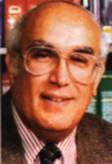
A Future Outlook for the Chemistry Enterprise:
A Pharmaceutical Industry Perspective
Magid Abou-Gharbia
Chemical and Screening Sciences
Wyeth Research, Princeton, NJ
The Pharmaceutical Industry is currently facing major challenges: greater complexity in producing NCEs (New Chemical Entities), intensified regulatory requirements, more patent expiration of top products, propagation of generic competition, increased cost of technology, drop in share value, and diminished confidence from both the public sector and Wall Street. These challenges and the pressure to reduce cycle time without compromising innovation result in substantially increased cost of Drug Discovery and Development. Many of these challenges are addressed through resourcefulness, process refinement and optimization, and enabling technologies including combinatorial chemistry, HTS, and structure-based design.
To implement these and other technologies, there is a staggering requirement for more chemists, and not diminished need for capacity as originally perceived. Outsourcing, collaborations, and alliance partnerships can present a company with added flexibility and the chance to “stretch” the value of research dollars. The speaker will highlight these issues and provide his own assessment of the future outlook for chemistry.
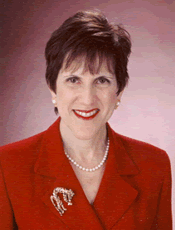
Changing Face of Chemistry
and Implications for the ACS
Madeleine Jacobs
Executive Director and
CEO of the American Chemical Society
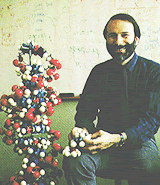
Training the Next Generation: Chemistry and the
Life Sciences: Partners or Adversaries?
Dr. Kenneth Breslauer
Linus C. Pauling Professor and Dean of Life Sciences
Rutgers University
Piscataway, NY 08854
Kenneth J. Breslauer, Ph.D.
Dr. Kenneth J. Breslauer was born in Jönköping, Sweden. He received his Bachelor of Arts (History) and Bachelor of Sciences (Chemistry) degrees, both with high distinction from the University of Wisconsin, Madison. He attended graduate school at Yale University, where he was awarded the Wolfgang Prize for outstanding teaching, and earned his Ph.D. (1972) in Biophysical Chemistry under the direction of Professor Julian M. Sturtevant. From 1972-1974, he was an NIH postdoctoral fellow with Ignacio Tinoco, Jr. at the University of California, Berkeley. In 1974, he was recruited to Rutgers University where, to the present time, he has pursued his career of teaching, research, and academic administration.
Dr. Breslauer currently is the Linus C. Pauling Professor and Dean of Life Sciences at Rutgers University. Under his administrative leadership, the biological sciences have been restructured into a Division of Life Sciences, outstanding faculty has been recruited, new state-of-the-art facilities have been built, and Rutgers University has been transformed into a world-class site for life sciences research.
Dr. Breslauer’s research programs produced the first energetic databases for rationally designing nucleic acid probes used in various diagnostic and therapeutic protocols. His databases also permit the rational design of nucleic acid-binding drugs, the mapping of protein and nucleic acid folding properties, and the ability to rationalize the differential recognition and binding properties of ligands for damaged DNA sites. His research programs are supported by major grants from both the General Medicine and Cancer Institutes of the NIH, as well as by grants from a broad range of private sources.
In 1981, Dr. Breslauer was selected as a Humboldt Fellow. In 1985, he was awarded the Sunner Medal as the nation's outstanding young thermodynamicist. In 1995, he was given the Hugh M. Huffman Memorial Award for lifetime achievement in Biothermodynamics and in 1996, he was elected a Fellow of the American Association for the Advancement of Science.

|
Tuesday, May 24th
7:00 PM - 8:15 PM
Fiber Optic
Lecture Theater
|
Wen-Chung Shieh Presider
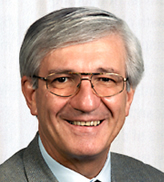
 - and - and  - Peptides: - Peptides:
Syntheses, Structures, and Biomedical Potential
Prof. Dieter Seebach
Biography:
After graduating with a degree in chemistry from the University of Karlsruhe, Germany, Dieter Seebach worked as a postdoctoral fellow at Harvard University in Cambridge, USA, where he taught and conducted research. In 1971 he took up a teaching post at the University of Giessen, Germany. He has been Professor of Organic Chemistry at the Federal Institute of Technology in Zurich since 1977. A winner of numerous research prizes, he was awarded an honorary doctorate degree by the University of Montpellier, France, in 1989. Prof. Seebach is a member of the New Swiss Chemical Society and comparable associations in Germany, Great Britain, Japan and the USA. He also belongs to the German Academy of Natural Science Research Leopoldina and is a corresponding member of the Academy of Sciences and Literature in Mainz.

|
Tuesday, May 24th
7:30 PM
SERC Room 111 |
This presentation is part of:
Chemical Education At Its Best:
Keynote Address and Teacher Awards
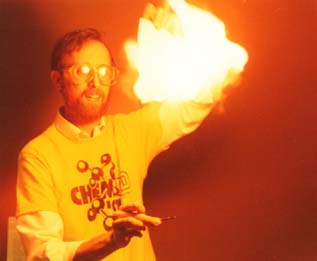
Weird Science: A Phenomenological Approach to Teaching
Lee Marek
Department of Chemistry MC111
University of Illinois at Chicago
[Weird Science, ]
Chicago, IL
"Weird Science" is a series of short, easy and sometimes "weird" demonstrations and ideas on chemical and physical phenomena. The program uses the "phenomenological" approach to teaching science -- introducing a topic with a demonstration or lab so that students have something concrete on which to focus. It will highlight the use of demonstrations as exocharmic motivators to captivate student interest with novel demonstrations guaranteed to hook kids and adults into thinking about science concepts. Humor and audience participation are an integral part of "Weird Science". As Hubert Alyea said "Surprise, humor and truth are the servants of a good lecture." "Weird Science" entertains while it educates. It is our job to awaken our student's desire to learn--to keep the students mentally coming back. You cannot communicate with people who are not mentally present. If you want "presence" you have to capture attention. "Weird Science" provides tools to capture attention. A number of these demonstrations have been presented on the David Letterman Show and the WEIRD, WEIRD, SCIENCE kids show.
|